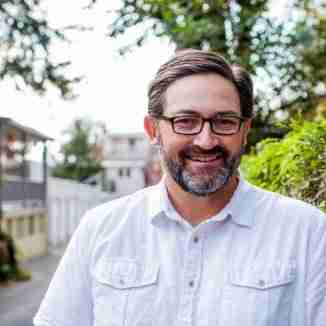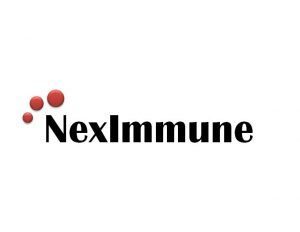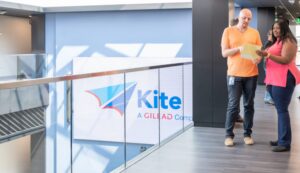
Jeeva Informatics Hosts Rare Disease Panel on Decentralized, Patient-Focused Clinical Trials
In recognition of Rare Disease Day 2021, Jeeva Informatics (Jeeva) brought together a panel of experts to discuss the importance of transforming the clinical trial process for rare diseases. The panel included Annie Kennedy, Chief of Policy and Advocacy, EveryLife Foundation for Rare Diseases; Thomas Lester, Former Executive Director, Audentes Therapeutics; Scott Schliebner, Senior Vice President, Scientific Affairs & Therapeutic Expertise, PRA Health Sciences; and Dr. Eric Sid, Program Director, National Center for Advancing Translational Science, Office of Rare Disease Research, (NCATS)/NIH.
Jeeva, which is located in Tysons Corner, Virginia, is a seed-stage venture-backed company on a mission to accelerate clinical research using digital health and data science. Founded by current CEO Harsha Rajasimha, who lost a child to a rare congenital disorder, Jeeva created the Jeeva eClinical platform to eliminate clinical trial bottlenecks, reduce travel burdens on patients and families, and improve long-term follow-up and safety monitoring compliance for rare diseases and other indications.
Rajasimha, who moderated the panel, kicked off the virtual event by framing the challenges faced by rare disease patients and families, stating,” In the rare disease community, patients spend about seven years on average undiagnosed…and once they do have a diagnosis, they consider themselves lucky if there is an FDA-approved treatment because only 5% of rare diseases have any treatments. If there are no FDA-approved therapies, the next best thing is to enroll in an ongoing clinical trial to access life-saving treatment options.”
Rajasimha noted that there are approximately 2,000 rare disease clinical trials registered on clincialtrials.com. Each of these trials requires building a registry for long-term tracking and follow-up processes. This requires significant, rich data collection across a wide array of categories. Questions like data ownership, language, data size, protocols, and looking out 5, 10, or 15 years make clinical trial design and execution highly complex and susceptible to bottlenecks.
“Human-centered design is the most crucial element here and making sure the human aspects are covered. Technology for technology’s sake is not going to be useful, particularly in the rare disease community and with long clinical trials,” added Rajasimha.
Most clinical studies stall early on in the process due to slow startups, low recruitment, poor screening, and difficult informed consent processes. Many of these challenges stem from traditional, onsite trials that require patients to physically visit the clinical trial site. 30% of clinical trials fail at the enrollment stage.
By deploying Cloud solutions, leveraging digital health technology, and moving toward decentralized clinical trials, many of these bottlenecks delaying rare disease clinical trials can be reduced or even eliminated. The impact on the 2,000 rare disease clinical studies decentralization could have would be significant and help rare disease patients and families in need.
“For patients, this entire process is about trying to understand the cause of their disease…and how do I gain access to therapies? For researchers that are trying to move a disease from observation to intervention…the entire scientific research process is about the data to create this change. Underlying everything is the data,” shared Dr. Eric Sid.
“A registry is about translating stories about a patient community into data…Registries are tools and platforms to collect data and lay the foundation for the future of science for a disease,” he added. “If your goal is to create a new therapy, this foundation needs to be built up. This is a marathon, not a sprint.”
Scott Schliebner shared, “I have been very passionate about removing the barriers that we find in clinical development and…to try and move us into the 21st century. We can do better. Rare disease patients can’t wait. We often develop clinical studies in a bubble that often doesn’t consider other factors and stakeholders. There are many problems with this traditional paradigm. This is really not working anymore.”
Schliebner went on to note that:
- 40M patients are needed for approximately 300K trials and that 50% of trials are delayed because of patient recruitment.
- 85% of clinical trials discontinue because of patient retention issues, resulting in 40B in losses.
- 70% of patients live more than 2 hours from a study site, resulting in a 30% patient drop out rate before the end of the trial; travel represents the biggest patient burden for rare disease patients.
“This is really about a patient-centric mindset. We do have technology at hand that can bring these studies to patients. Decentralized trials really are the way of the future,” Schliebner added.
“Democratizing clinical research will lead to more scientifically sound research, broader access for patients, accelerated timelines, and lowered costs.”
“Longitudinal data, which is data collected consistently from the same patient over time, is the most valuable and the most difficult to achieve. New treatments require 5 to 10 years of follow-up to track safety and long-term benefit,” shared Thomas Lester.
Decentralizing clinical trials via digital health solutions is the critical path that can help patients remain compliant over the long periods of time required to collect these essential longitudinal data sets. The traditional, onsite clinical trial approach requiring a patient to drive hours for each check-in is simply untenable and quite unnecessary if modern tools are deployed to execute a clinical study. A clinical trial solution like Jeeva’s eClinical platform can help those researching rare diseases build better registries and stronger data foundations that will make trials more efficient and effective.
Annie Kennedy joined the panel representing the EveryLife Foundation for Rare Diseases, which is a coalition that focuses on policy across four pillars: accelerating therapeutic development, access to these therapies, reducing the diagnostic odyssey, and policy.
“We need to stop seeing approval as the ‘Holy Grail.’ We need to think about what those in the access environment need to understand about the patient journey. We need to pull values, outcomes, and data elements into our registry as early as possible so we can collect it long term to inform decision-making all along the pipeline,” stated Kennedy. “In truth, we have many different stakeholders that need to understand our patient communities.”
“And as patient communities, we need to collect data in a way that will speak to everybody at different time points,” she added. “When a therapy gets approved, for example, and a payer starts looking at the data, we need to have answers to their questions.”
On the policy front, Kennedy noted that Patient-Focused Drug Development (PFDD) was recently made official as part of 21st Century Cures legislation passed during the last Prescription Drug User Fee Act (PDUFA) cycle. PFDD is defined as …”a systematic approach to help ensure that patients’ experiences, perspectives, needs, and priorities are captured and meaningfully incorporated into drug development and evaluation.”
“Patient-experience data is here to stay. For patient communities, this was a really important signal. This told us we are not just spinning our wheels. We need to ensure we are working with industry, academic institutions, and regulators to make sure the lived journey of our caregivers and communities are being fully integrated into trial design, natural history studies, regulatory decision-making, and the access environment,” she added.
Rajasimha wrapped up the event by stating, “Dr. Christopher P. Austin of NCATS said it’s going to take 2,000 years at the current speed of developing therapies to have a treatment for every rare disease. That’s just not acceptable. If we can collaborate more within the rare disease community…and if we can all come together with this common goal of accelerating therapies for rare diseases, for all 7,000 of them, we can achieve this by applying people, process, and technology. If we can achieve this goal within our lifetimes that would be phenomenal.”
- About the Author
- Latest Posts
Steve brings nearly twenty years of experience in marketing and content creation to the WorkForce Genetics team. He loves writing engaging content and working with partners, companies, and individuals to share their unique stories and showcase their work. Steve holds a BA in English from Providence College and an MA in American Literature from Montclair State University. He lives in Frederick, Maryland with his wife, two sons, and the family dog.






